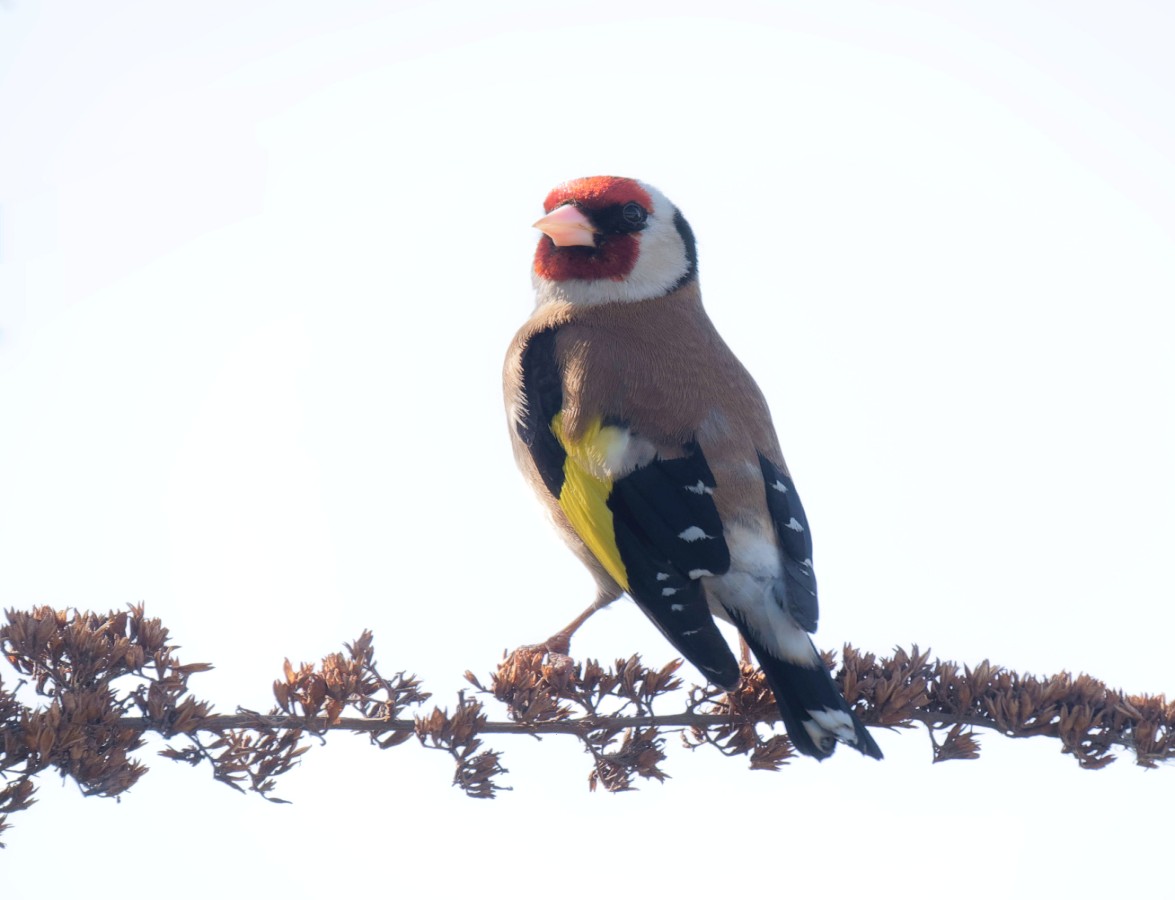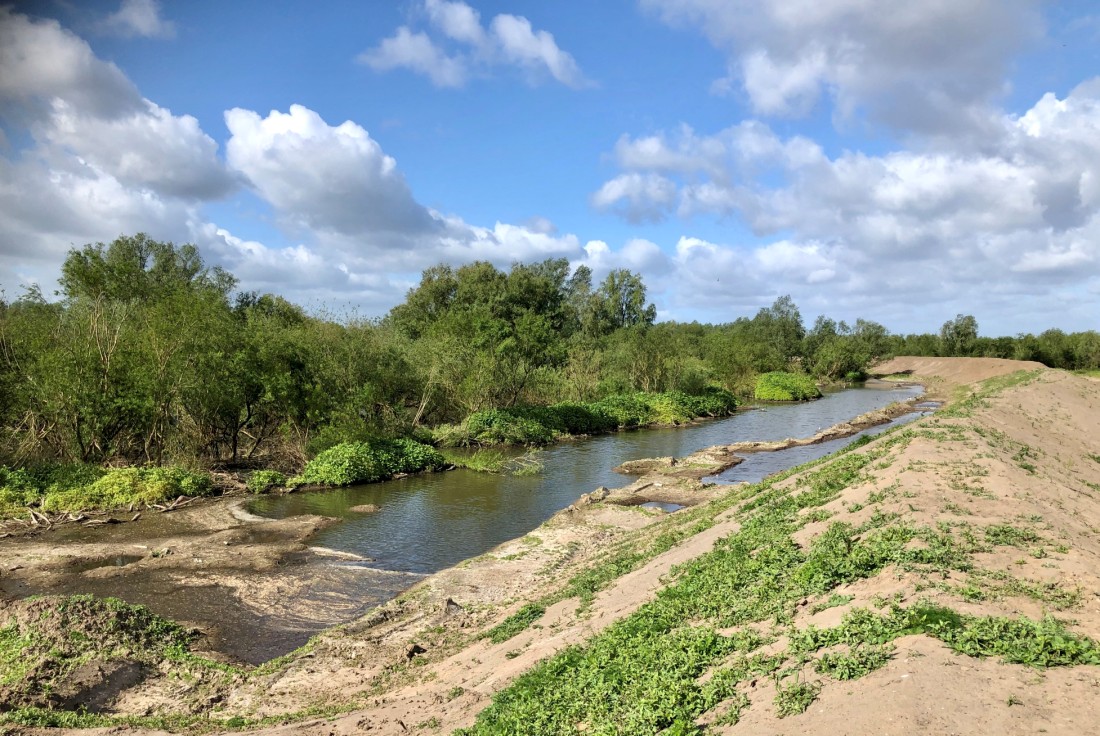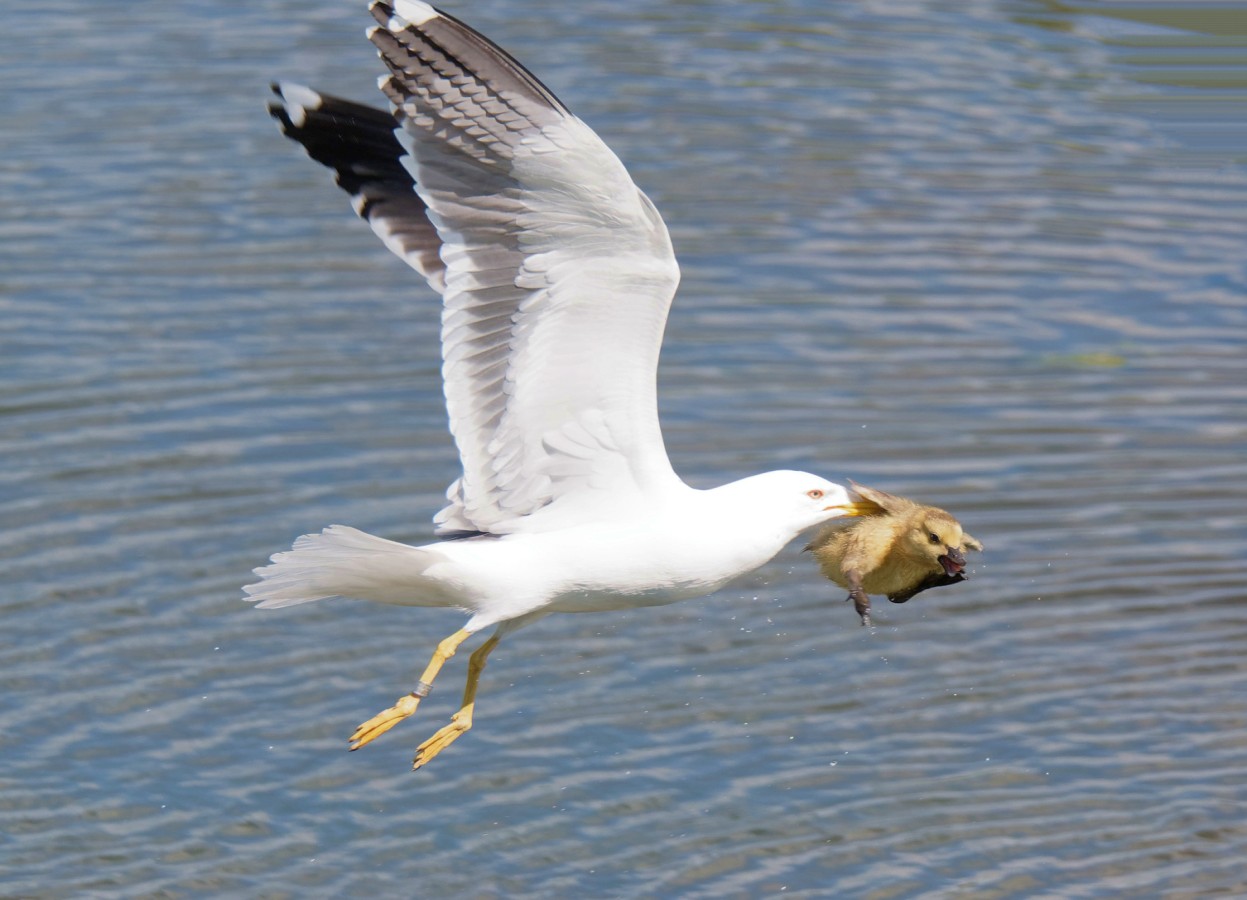Woolston Eyes Monthly Sightings
2020-05-31
Here’s a link to a brief video showing the three species for which we confirmed breeding yesterday - Peregrine, Yellowhammer and Kestrel. It also shows a school of c.40 spawning fish (Bream?) visible from the No.3 bed Footbridge.
To watch David’s video click here…. or simply cut and paste the following link into your browser https://youtu.be/aV6OZYotd7s Cheers David
Submitted by: David Bowman
2020-05-30
This was one of those special sunny mornings, when odd surprise encounters keep adding to the pleasure of the day. Dave Steel and I undertook to complete the Breeding Bird Survey of the whole Reserve by doing the section around Butchersfield Tip and down to Bollin Point. Meanwhile, Helen Wynn went to check on progress with our breeding Peregrines. Things started well with a pair of adult Mediterranean Gulls passing overhead and then two Garden Warblers and a Lesser Whitethroat in song, bringing the number of territories for each to 12 (a record) and 3 respectively. The next surprise was to find a male Yellowhammer giving its alarm call and behaving in such a way as to indicate that a nest or young were nearby. Although Yellowhammers occasionally stray onto the Reserve, we’ve been hoping to confirm breeding for more than forty years, so that was really pleasing. Then we found our first Banded Demoiselle of the year (never common here) and a female Kestrel guarding a nest with at least two young. The latter was a pleasing return for a species which had recently stopped breeding on the Reserve. From their behaviour the Peregrine pair, too, looked to be guarding small young, which should be visible when they get a bit bigger. As we were walking back to the car park, a sleek, though not entirely welcome, Mink walked across our path. Finally, on No.3 bed, a Southern Hawker and Small Skipper were also firsts for the year and a shoal of 40+ fish (see pic) were below the Footbridge. Photo of the Yellowhammer Cheers David
Submitted by: David Bowman
2020-05-28
On the hottest spring day so far, I met up with Dave Steel to complete a breeding bird survey of No.4 bed. This is the largest of the four beds on the Reserve and holds a huge number of breeding species. By the end of the morning we’d managed to locate 401 birds in song, of which 139 were warblers. Highlights were: 2 Lesser Whitethroats, 3 Garden Warblers, 3 Cetti’s Warblers,1 Sedge Warbler, 10 Reed Warblers, 12 Willow Warblers, 25 Chiffchaffs, 46 Blackcaps, 36 Whitethroats, 70 Wrens, 30 Blackbirds, 19 Dunnocks and 35 Robins. Then I went into No.3 bed to check on progress with our key breeding species and the general condition of the bed, with an eye on hopefully re-opening before too long. Our two rarest breeding birds, in a national context, are Pochard and Black-necked Grebe. Pochard are an attractive diving duck, with a national breeding population of c.650 pairs, with around 15 pairs breeding on the Reserve. I was really pleased to locate 7 broods (with another on No.4 bed), with, hopefully, more to come. Black-necked Grebes are even scarcer, with a national breeding population of just c.50 pairs, of which we usually hold about a 10-12 pairs. From todays assessment, it looks like a good year for this attractive small grebe, with between 13-15 pairs present and the first young noted. Photo of a Goldfinch Cheers David
Submitted by: David Bowman
2020-05-23
Up at 6.00 am again to do a breeding bird survey of one of the operational beds. No.2 bed is the only one of the four beds currently being used by the Ship Canal Company for the deposition of dredgings from the canal. Recently, a new bund has been built within the bed, exposing the water table and creating a large area of flooded woodland. Wildfowl have quickly moved into this seed-rich area and 120 Gadwall have regularly been feeding there, overnight. This morning, a Little Grebe was trilling and small flocks of Shelduck, Gadwall and Mallard were present. Around the perimeter of the bed 140 birds were in song (58 warblers), with the highlight being the 4 Garden Warblers, making 9 Garden Warbler territories in all. Other sightings of note included: 2 Redshanks, 2 Little Ringed Plovers,1 Oystercatcher and 100 Swifts. Photo of the flooded woodland in No.2 bed Cheers David (with Dave Steel)
Submitted by: David Bowman
2020-05-21
Up at 6.00 am to meet Dave Steel and do a (socially distanced) walk, counting all breeding birds on our way. As ever at this time of year, you can’t help but be struck by how insect-rich the habitat is, which contributes to the amazing density of breeding birds. Some of the counts of singing males included: 1 Garden Warbler, 1 Sedge Warbler, 6 Cetti’s Warblers, 1 Willow Warbler, 4 Whitethroats, 30 Reed Warblers, 18 Chiffchaffs, 23 Blackcaps, 11 Reed Buntings, 6 Song Thrushes, 32 Wrens, 18 Robins and 6 Dunnocks. Other nice additions included a well-grown Tawny Owl chick, 2 over-flying Mediterranean Gulls, 1 Kingfisher and 30 Swifts. Always nice to see mammals, too, as a Weasel bounced across the track in front of us. Cheers David
Submitted by: David Bowman
2020-05-19
Another dawn start, on a beautiful sunny day, for my walk, which included a visit to check the wetland development on No.4 bed. There was plenty of variety, with highlights of: one Cuckoo, two Dunlins, two Little Ringed Plovers, one Snipe, four Garden Warblers, two Sedge Warblers, one Lesser Whitethroat, lots of Reed and Cetti’s Warblers, a hunting Peregrine and 20 Swifts. The other nice bit of mammalian news, to go with the young Grey Seal which has been seen regularly on the River, was of a reported sighting of two Roe Deer, just inside the gate to No.2 bed. In 42 years of involvement with the Reserve, I’ve only ever seen Roe Deer the once and I think there are only a couple of previous reports from that time. Other sightings from the past day or two have included another Red Kite and a possible breeding pair of Yellow Wagtails. The latter haven’t bred on the Reserve since the mid 1980s, so fingers crossed. Photo of a female Pochard Cheers David
Submitted by: David Bowman
2020-05-14
Another beautiful, late spring morning for my dawn walk to the Weir Basin, with blue skies and a light south-westerly breeze. By mid-May the main flood of migration is over, though lesser numbers of birds are still arriving and the chance of something spectacular, like the 13 Bee-eaters which have turned up on the Lleyn, Peninsula in Wales recently, is always possible. Nothing that exciting for me today, but watching 60 Swifts feeding overhead, with scores of hirundines, is always a pleasure and as ever they drew in a hunting Hobby. Back in the 80s you had to travel to the south of England to see a Hobby but global warming has enabled them to spread northwards and Cheshire now holds a small but stable breeding population. The two Cuckoos, which have been around for a few days now, were still calling from in No.3 bed, while both Garden Warbler and Lesser Whitethroat were singing along the canal-side track. Photo of a Common Buzzard Cheers David
Submitted by: David Bowman
2020-05-09
It was one of those hot, still spring mornings when either nothing much is moving or all sorts of odds and ends pass through. Luckily, today it was one of the latter. Setting off just after dawn and heading for the Weir Basin, a Cuckoo was flying along the east bank of No.3 bed before perching and calling persistently. Cuckoos were once a fairly common sight on the Reserve, breeding on all four beds before, as part of a national decline, we lost them altogether. Last year saw them return and probably breed, so I’m hopeful that this is one of our returning birds. A second Cuckoo then began to call and the two were duetting, on and off, for the whole of the walk. As ever, the river was acting as an east-west fly line and, in quick succession, a Golden Plover (surprisingly scarce at Woolston), two Little Ringed Plovers and two Oystercatchers flew west, while a Little Egret flew east. Another hopeful sighting was of an adult Mediterranean Gull, soaring and calling and we remain hopeful of them eventually breeding. The odd dragonfly had also emerged, including my first Broad-bodied Chaser of the year. Cheers David
Submitted by: David Bowman
2020-05-07
Another early start, with clear skies and a morning mist quickly getting burned off by the warm sun. I first walked on to No.4 bed, to check on progress with the wetland development before walking to the Weir Basin. One of the things about getting out early is that it increases your chances of an encounter with one of Woolston’s mammals - with Fox, Badger, Stoat and Weasel all possible. This morning it was a Fox slinking through the grass before bounding away as soon as it saw me. With the still, warm conditions, the only migration evident was of aerial feeders, with small numbers of Swifts, Swallows and Sand Martins moving through. As ever, the large number of singing warblers was a real feature, with Lesser Whitethroat, Grasshopper Warbler, and Garden Warbler among the commoner species and a soaring, calling Mediterranean Gull was also good to see. Photo of a Fox Cheers David
Submitted by: David Bowman
2020-05-05
I was up so early this morning, for my walk to the Weir Basin that I watched the moon set in the west and the sun rise in the east! Once again, dawn saw a fresh easterly breeze and mostly clear blue skies as I set off. The undoubted highlight was the sight of a Cuckoo flying over the trees on the east bank of No.3 bed and to later hear its unmistakeable call. Cuckoos were once a regular breeder on the Reserve, on all four beds but disappeared as a breeding species when the national decline began. It had reached the point in recent years where we were lucky to see even one passing through. Last year, though, there was a resurgence and I suspect that they may have tried to breed again, so, hopefully, this is one of last year’s birds returning. Another welcome sight was an arrival of around 100 Swifts, which fed over the beds before drifting away to the east. Less welcome was the sight of so many Lesser Black-backed Gulls at the Weir Basin. They have established a large, breeding colony on factory/office roofs at Woolston and heavily predate the young of our breeding wildfowl - see the photo of one snatching a young Canada Goose chick from a brood on the river! Cheers David
Submitted by: David Bowman
2020-05-02
Another really rewarding dawn walk to the Weir Basin today, followed by a quick review of progress with the wetland development on No.4 bed. I guess everyone who’s interested in wildlife has a different way of judging when spring has arrived. For me it starts when the first Sand Martin arrives, usually sometime in early March. and is finally, properly here when the air is filled the full suite of Woolston warblers in song. Such was the case today, with Grasshopper Warbler, Lesser Whitethroat, Garden Warbler, Cetti’s Warbler, Blackcap, Whitethroat, Sedge Warbler, Reed Warbler, Willow Warbler and Chiffchaff all making themselves heard. Other nice birds seen along the way included 2 adult Mediterranean Gulls and a Hobby dashing through the feeding flock of 30 Swifts and a few hundred hirundines. Photo of a drake Gadwall in flight Cheers David
Submitted by: David Bowman














